With age and storage of potentially odorous substances, wooden drawers have been known to develop a wide array of unpleasant smells. After an odor develops it can be incredibly difficult to regain freshness and eliminate the foul stench.
Though it may seem challenging to deodorize drawer, the use of a handful of household remedies can be utilized to bring freshness back within the enclosed spaces. Using the following solutions can help to wipe out any unwanted smells and bring freshness within the enclosed wooden space.
Smell Removal Solutions for Wood Drawers
1 Steaming White Vinegar Bowl
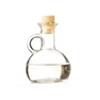 The use of this household acid solution can do much to cut through difficult odors on the drawer’s interior. Mix a solution of white vinegar and water in equal parts and heat the solution to a boil. Pour this solution within a small bowl and place the bowl within an enclosed drawer. The steam from the solution will work to cover the interior of the drawer and deodorize it over a 24-48 hour period. Although this solution is better for large singular drawers, it remains one of the most effective ways to deodorize t.
The use of this household acid solution can do much to cut through difficult odors on the drawer’s interior. Mix a solution of white vinegar and water in equal parts and heat the solution to a boil. Pour this solution within a small bowl and place the bowl within an enclosed drawer. The steam from the solution will work to cover the interior of the drawer and deodorize it over a 24-48 hour period. Although this solution is better for large singular drawers, it remains one of the most effective ways to deodorize t.
2 Outdoors + Direct Sunlight
 Although it may sound overly simplistic, placing a drawer outside within the sun can do much to erase the effects of odors within the drawer. The ultraviolet rays will work to dry up any odorous residues while the fresh air and open space will help to carry unwelcome smells away. For best results find a location within the yard where the drawers are sure to receive a minimum of 8 hours of direct sunlight. If any residual odor exists after one day within the sun, place the smelly drawer outside for a second or third day until they have completely deodorized.
Although it may sound overly simplistic, placing a drawer outside within the sun can do much to erase the effects of odors within the drawer. The ultraviolet rays will work to dry up any odorous residues while the fresh air and open space will help to carry unwelcome smells away. For best results find a location within the yard where the drawers are sure to receive a minimum of 8 hours of direct sunlight. If any residual odor exists after one day within the sun, place the smelly drawer outside for a second or third day until they have completely deodorized.
3 Baking Soda Lining
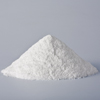 This deodorizing household powder can do much to dry out and absorb challenging drawer smells. Measure a half cup of baking soda and pour within the drawer. Next, proceed to shuffle the drawer to evenly spread the powder along the bottom side of the drawer. Once complete, close the drawer and allow the baking soda to work it’s magic for the following 2-3 days. After this time has passed, the drawer can be removed to pour the baking soda out of the freshened drawer.
This deodorizing household powder can do much to dry out and absorb challenging drawer smells. Measure a half cup of baking soda and pour within the drawer. Next, proceed to shuffle the drawer to evenly spread the powder along the bottom side of the drawer. Once complete, close the drawer and allow the baking soda to work it’s magic for the following 2-3 days. After this time has passed, the drawer can be removed to pour the baking soda out of the freshened drawer.
4 Lava Rock
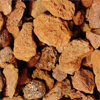 Although baking soda is highly effective, many claim that lava rock works even better as an odor absorbent from the interior of a wooden drawer. To apply, place a handful of lava rock within each smelly drawer. Proceed to allow the lava rock to absorb all unwanted odors over the course of the next 5-7 days. Once completed, simply remove the lava rock and place the freshened drawer back within use.
Although baking soda is highly effective, many claim that lava rock works even better as an odor absorbent from the interior of a wooden drawer. To apply, place a handful of lava rock within each smelly drawer. Proceed to allow the lava rock to absorb all unwanted odors over the course of the next 5-7 days. Once completed, simply remove the lava rock and place the freshened drawer back within use.
5 One or Two Activated Charcoal Briquettes
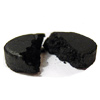 Similar to lava rock, activated charcoal briquettes can work well at absorbing difficult odors from wood drawers. Depending upon the size of the drawer, place one or two activated charcoal briquettes within the drawer and subsequently shut it. Allow a minimum of seven days for the activated charcoal to eliminate and absorb all foul stenches within the drawer. Afterwards, the charcoal can be removed and the drawers can be placed back within use.
Similar to lava rock, activated charcoal briquettes can work well at absorbing difficult odors from wood drawers. Depending upon the size of the drawer, place one or two activated charcoal briquettes within the drawer and subsequently shut it. Allow a minimum of seven days for the activated charcoal to eliminate and absorb all foul stenches within the drawer. Afterwards, the charcoal can be removed and the drawers can be placed back within use.
6 Half Cup Coffee Beans
 As a final absorbent solution, coffee beans can offer an effective solution for removing odors and adding a subtle aroma of fresh morning grounds. For application, simply measure a half cup of coffee beans per drawer, making sure that the drawer is shuffled to properly distribute them along the drawers bottom. Allow the coffee beans to sit for 3-4 days before removing them from the freshen drawer and placing the wooden enclosed space back within use.
As a final absorbent solution, coffee beans can offer an effective solution for removing odors and adding a subtle aroma of fresh morning grounds. For application, simply measure a half cup of coffee beans per drawer, making sure that the drawer is shuffled to properly distribute them along the drawers bottom. Allow the coffee beans to sit for 3-4 days before removing them from the freshen drawer and placing the wooden enclosed space back within use.
[contact]




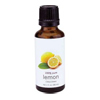 If one solution naturally combatted cigarette smoke it would be citrus fruit. By using citrus wood oil, you will be able to counteract the cigarette smoke residues that have made their way within the wood fiber’s surface. Wash down wood surface before application, and apply with an old rag that you don’t mind getting stained. After a healthy application, you can be assured that any smoke related odor will be a thing of the past.
If one solution naturally combatted cigarette smoke it would be citrus fruit. By using citrus wood oil, you will be able to counteract the cigarette smoke residues that have made their way within the wood fiber’s surface. Wash down wood surface before application, and apply with an old rag that you don’t mind getting stained. After a healthy application, you can be assured that any smoke related odor will be a thing of the past.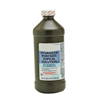 This cleaning solution work well at disinfecting surfaces, and lifting embedded residues. Mix a solution of hydrogen peroxide and water in equal parts and proceed to wipe down the entire wood surface with the solution. After 5 minutes have passed wipe down the wood’s surface a second time with a damp rag to remove any remaining hydrogen peroxide. Besides hydrogen peroxide’s deodorizing capabilities, it has the potential to slightly bleach the wood if it is left to sit for too long of a period.
This cleaning solution work well at disinfecting surfaces, and lifting embedded residues. Mix a solution of hydrogen peroxide and water in equal parts and proceed to wipe down the entire wood surface with the solution. After 5 minutes have passed wipe down the wood’s surface a second time with a damp rag to remove any remaining hydrogen peroxide. Besides hydrogen peroxide’s deodorizing capabilities, it has the potential to slightly bleach the wood if it is left to sit for too long of a period.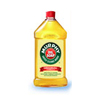 This cleaning product is fantastic at cleaning wood and extracting odorous residue off from wood surfaces. Apply product to a clean hand towel and wipedown the entire surface area of the wood and lift away smoke-related residues.
This cleaning product is fantastic at cleaning wood and extracting odorous residue off from wood surfaces. Apply product to a clean hand towel and wipedown the entire surface area of the wood and lift away smoke-related residues.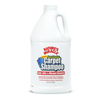 Wiping down the smoke ridden surface of wood with an enzyme cleaner will do much to lift cigarette residues and remove the stench. Enzyme products can be purchased at pets stores and most large supermarkets. The activated enzymes within this solution will go to work in literally eating through the unwanted organic residues.
Wiping down the smoke ridden surface of wood with an enzyme cleaner will do much to lift cigarette residues and remove the stench. Enzyme products can be purchased at pets stores and most large supermarkets. The activated enzymes within this solution will go to work in literally eating through the unwanted organic residues.

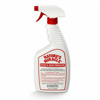 Try using a
Try using a 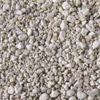 Kitty litter has wonderful range of odor absorption. When your kitten piddles on wood, just pour cat litter over the location and allow for it to sit for 24 hours. After a day has passed, sweep it up and enjoy freshened wood.
Kitty litter has wonderful range of odor absorption. When your kitten piddles on wood, just pour cat litter over the location and allow for it to sit for 24 hours. After a day has passed, sweep it up and enjoy freshened wood.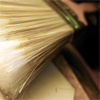 If cleaning methods are not effective, vanish can be applied to the wood’s surface to seal the odor within the fiber. Placing two coats of vanish will help to ensure that the odor does not return.
If cleaning methods are not effective, vanish can be applied to the wood’s surface to seal the odor within the fiber. Placing two coats of vanish will help to ensure that the odor does not return.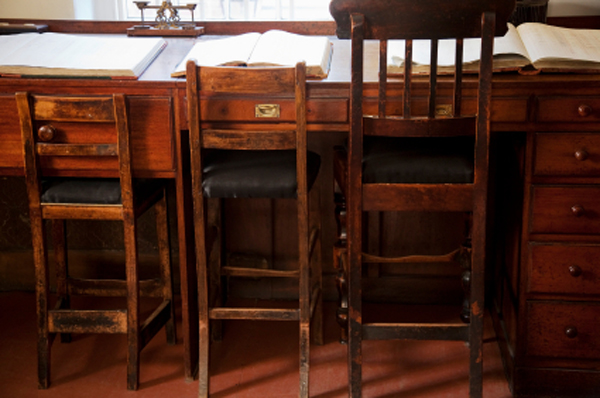

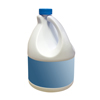 Create a mixture of one part bleach to six parts water within a bowl or bucket. Take a cloth and dunk it within this mixture and begin scrubbing down the the piece of furniture. Bleach will work wonders in eating away at any mold and leave a sterilized surface behind.
Create a mixture of one part bleach to six parts water within a bowl or bucket. Take a cloth and dunk it within this mixture and begin scrubbing down the the piece of furniture. Bleach will work wonders in eating away at any mold and leave a sterilized surface behind.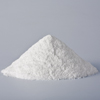 Baking soda is known for it’s ability to eliminate a wide range of household odors. A solution of one part baking soda and ten parts water will absorb nearly all of the musty odors. Mix thoroughly, and scrub down entire surface of wood furniture. Let this solution air dry off of the surface, and enjoy freshened furniture.
Baking soda is known for it’s ability to eliminate a wide range of household odors. A solution of one part baking soda and ten parts water will absorb nearly all of the musty odors. Mix thoroughly, and scrub down entire surface of wood furniture. Let this solution air dry off of the surface, and enjoy freshened furniture.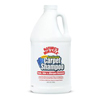 Unique enzymes within this product eat away at mold and leave freshness behind. Pour some of this product into a cloth and work the solution into the entire piece of wooden furniture. Allow product set into the grain of the wood and air dry away.
Unique enzymes within this product eat away at mold and leave freshness behind. Pour some of this product into a cloth and work the solution into the entire piece of wooden furniture. Allow product set into the grain of the wood and air dry away.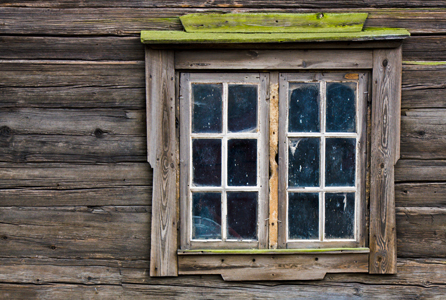
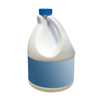 This is best solution for eliminating a variety of organic organisms including mold. The bleach cuts through wood fiber and works well at sterilizing any surface that it is applied to. Prepare a solution of one part bleach to six parts water within a bowl. Dunk a cloth within the formula and begin scrubbing down the moldy surface. Be sure to wipe off all visible mold growth, while scrubbing down all areas within a few feet of the mold’s location.
This is best solution for eliminating a variety of organic organisms including mold. The bleach cuts through wood fiber and works well at sterilizing any surface that it is applied to. Prepare a solution of one part bleach to six parts water within a bowl. Dunk a cloth within the formula and begin scrubbing down the moldy surface. Be sure to wipe off all visible mold growth, while scrubbing down all areas within a few feet of the mold’s location.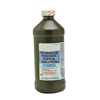 This powerful household ingredient does a great job at breaking down organics. Mix this solution in equal parts with water and apply to the origin of the odor. Scrub this into the fiber and let sit to air dry. A lesser known benefit of this solution is that it will also work to remove any unwanted discolorations or stains caused by the mold.
This powerful household ingredient does a great job at breaking down organics. Mix this solution in equal parts with water and apply to the origin of the odor. Scrub this into the fiber and let sit to air dry. A lesser known benefit of this solution is that it will also work to remove any unwanted discolorations or stains caused by the mold.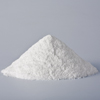 Mix a solution of one part baking soda with 5 parts water to scrub area down. If smell persists, sprinkling baking soda in heavy quantities over this location and leave it to sit for 24-48 hours. Upon competition, sweep powder up and leave freshen wood behind.
Mix a solution of one part baking soda with 5 parts water to scrub area down. If smell persists, sprinkling baking soda in heavy quantities over this location and leave it to sit for 24-48 hours. Upon competition, sweep powder up and leave freshen wood behind.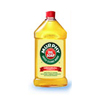 This is a wonderful product for cleaning and deodorizing wood. The oil works well at getting deep within the fiber of the wood and neutralizes odors. To use, pour this product on the location and scrub substance into the wood’s grain. You can lift remaining solution from the surface with a cloth.
This is a wonderful product for cleaning and deodorizing wood. The oil works well at getting deep within the fiber of the wood and neutralizes odors. To use, pour this product on the location and scrub substance into the wood’s grain. You can lift remaining solution from the surface with a cloth.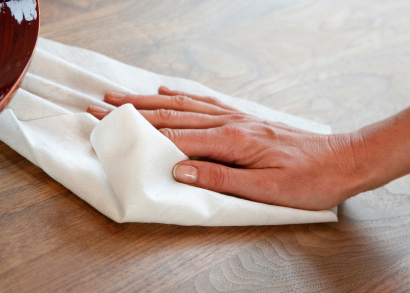


 Mix one part bleach with five parts water in the creation a solution that will eat through any microscopic mold particles. Apply this to the entire surface of your wood item making sure that no area is untouched. This will ensure that the bleach eats through all traces of mold and making sure that it never returns.
Mix one part bleach with five parts water in the creation a solution that will eat through any microscopic mold particles. Apply this to the entire surface of your wood item making sure that no area is untouched. This will ensure that the bleach eats through all traces of mold and making sure that it never returns. Cleaning pet products like Nature’s Cure introduces active enzymes that work to eat organic materials like urine. By pouring this solution on the area of the accident and rubbing it into the grain of the wood, you can work to neutralize the remaining odor. Enzyme-based cleaning products like this are available at most large super markets and pet stores.
Cleaning pet products like Nature’s Cure introduces active enzymes that work to eat organic materials like urine. By pouring this solution on the area of the accident and rubbing it into the grain of the wood, you can work to neutralize the remaining odor. Enzyme-based cleaning products like this are available at most large super markets and pet stores.